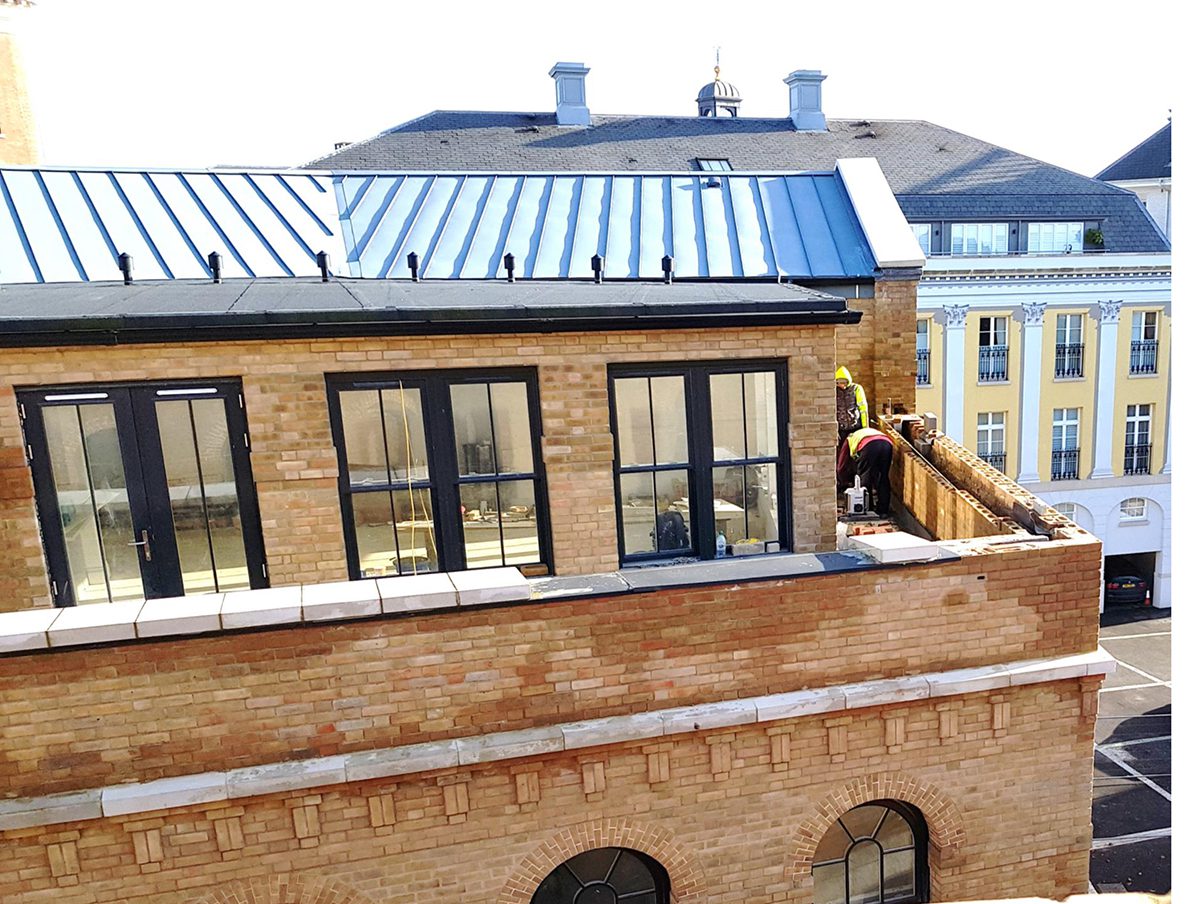Discharge below the balcony doors will feed wetness into the living accommodation below
A Building Regulation requirement that aids gravitational drainage and prevents capillary action, can channel penetrating rain into a building. Part C, page 37.5.32 describes cavity closers having fins. Penetrating rain gravitates between such fins and discharges where the closer terminates. In the case of a ground level external door opening in a typical cavity wall, termination is at the bottom of the sill. Water discharge can safely continue its downward path.
Type GBOT
The scenario changes when the external door opening is not at ground level. Where the external door opening is located at a higher level, such as onto a balcony or flat roof area, the bottom-of-sill level is commonly below the adjacent horizontal intersection level. Consider what is underneath. If water is allowed to gravitationally discharge, it does so into lower parts of the building that are internal – causing dampness.
Type GBOT
The extent of water can be anything from negligible to severe – it depends on many factors including, topography, height, exposure, masonry type, build quality etc. To ensure regulation fins can continue to function as intended without feeding wet into the structure, the higher-level door opening should interface with adjacent horizontal measures. This is achieved using a problem eliminating link.
Type GBOT in position
Cavity Trays’ Type G Balcony Opening Tray (GBOT) combines closer receiving links, stopends, and undersill DPC. Versions are available to accommodate variable opening and external level relationships. The water gravitational path is interrupted and water discharged via caviweeps. The construction underneath remains dry. Technical details from Cavity Trays of Yeovil.
Source: Architecture Today





